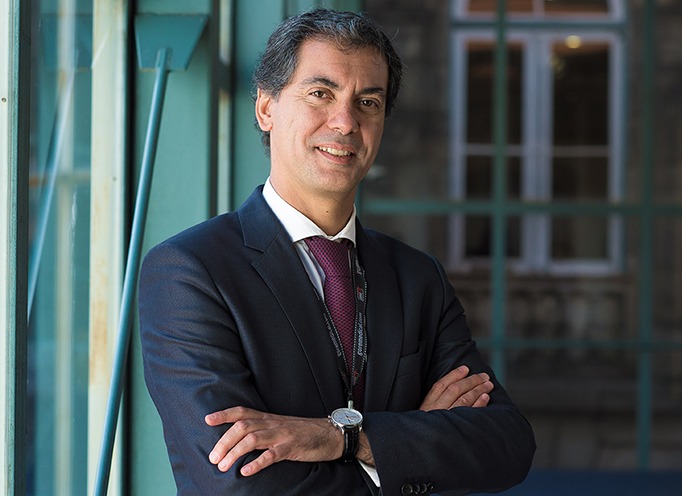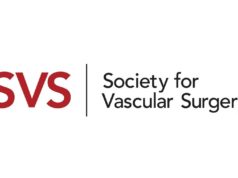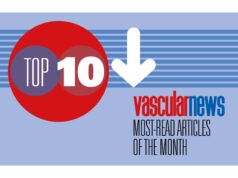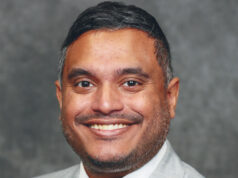 Shortages in the US vascular surgery workforce was the focus of this year’s Stanley Crawford Critical Issues Forum at the Society for Vascular Surgery’s (SVS) Vascular Annual Meeting (VAM; 20–23 June, Boston, USA). The session highlights a problem faced by governments and healthcare providers across the world, as specialists struggle to keep up with increasing older demographics and a globally escalating vascular disease burden.
Shortages in the US vascular surgery workforce was the focus of this year’s Stanley Crawford Critical Issues Forum at the Society for Vascular Surgery’s (SVS) Vascular Annual Meeting (VAM; 20–23 June, Boston, USA). The session highlights a problem faced by governments and healthcare providers across the world, as specialists struggle to keep up with increasing older demographics and a globally escalating vascular disease burden.
The annual Critical Issues Forum, as explained by SVS president Michel Makaroun, focuses each year on a “very important topic facing our specialty and practice”. Opening the session, Makaroun said “most of you are well aware that we have a national surgeon shortage”, and it is true that the challenge facing vascular surgery in the USA is one that has been discussed frequently in recent years. A report on behalf of the SVS and published in the Journal of Vascular Surgery in 1996 identified future workforce issues in the field, and proposed ways to mitigate this problem. Makaroun acknowledged that although “it is not a new problem, unfortunately, it seems all we have been doing about it so far is applying band-aids—and the problem keeps on getting worse.”
Similar warnings have been raised in other countries, as a 2014 survey of the UK vascular surgeon workforce carried out by the Vascular Society of Great Britain and Ireland reported: “As we anticipate the changing demographics and treatable disease patterns over the next 40 years, we consider it inevitable that our specialty will be in short supply at a time when demand for our services is growing rapidly”. Sophie Renton, consultant vascular surgeon at the London North West Healthcare NHS Trust and member of the vascular Specialty Training Committee in London, UK, tells Vascular News “It is anticipated that there will be a shortage of vascular surgeons in the UK. We recruit less than 30 vascular trainees every year, the number is a little variable. We also recognise that up to 50% of our established consultants will retire in the next five years. At the same time, we recognise that the need for vascular surgeons will increase with the increasingly elderly population and the increase in diabetic foot disease.”
A 2013 study published in Health Affairs by Timothy Dall and colleagues similarly posited the problem that “An ageing population and growing disease burden will require a large and specialised healthcare workforce by 2025”, and goes on to project that “the demand for adult primary care services will grow by approximately 14% between 2013 and 2025. Vascular surgery has the highest projected demand growth (31%), followed by cardiology (20%) and neurological surgery, radiology, and general surgery (each 18%).” Five years have passed since that paper, as Makaroun argued at SVS VAM: “The shortage is not really in the future. The shortage is really upon us, right now.”
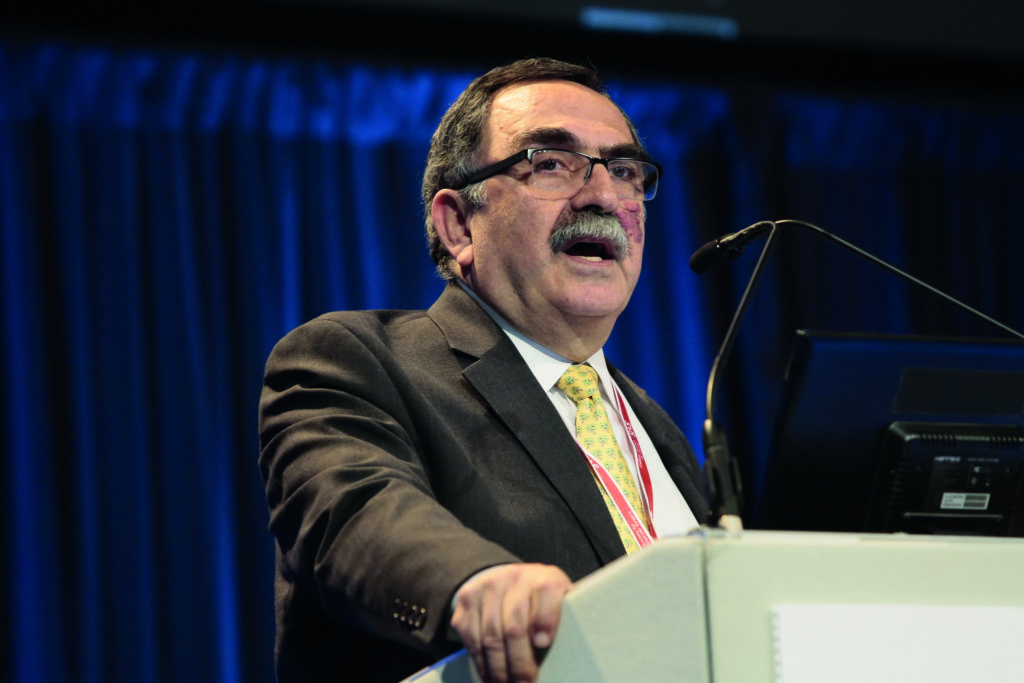
The age of the vascular surgeon—and the patient
The ageing population, often mentioned in the context of the so-called “baby boomer generation”, is a problem faced across the Western world. The continuing swell in numbers of this demographic comes with clear implications for the vascular workforce, as Makaroun points out this is the patient age group in which vascular disease is more prominent. Changing demographics are impacting most areas of healthcare and surgery, as discussed by neurosurgeon Richard Kerr (Oxford University Hospitals, Oxford, UK) for the UK Royal College of Surgeons’ ongoing Commission on the Future of Surgery: “patient numbers are going to continue to rise. The age of the patient population we are going to treat will continue to rise. The complexity of those patients and particularly the comorbidities they carry, is going to continue to rise.” In the Commission’s collection of oral evidence, the impact of older demographics were clarified by Nick Wareham, director of the MRC Epidemiology Unit in Cambridge, UK, who explained that the current UK population of 65 million people is expected to measure at 74 million in 2039. At the same time, “the proportion of people aged over 65 is really shooting up.” In 1976 this age group represented 14.25% of the total population, “but by 2036 it will be 23.9%. So, it is a bigger proportion of a bigger population.”
But the baby boomer phenomenon is not only a problem when it comes to patients: the vascular surgery specialty will see a significant portion of their ranks retire in the next decade, as well as the older general and thoracic surgeons still providing approximately 10% of vascular services, Makaroun points out. In the UK, the national survey carried out by the Vascular Society in 2014 found that as much as 35% of the consultant vascular workforce intended to retire in the next decade, by 2024. A more recent survey by the SVS in the USA reflect a working demographic that Makaroun describes as “scary”, with 41.7% of practicing vascular surgeon respondents over the age of 55.
In both USA and the UK, vascular specialists are also reporting high rates of burnout due to poor work-life balance and heavy workload. In 2017, the SVS found that 46.2% of its US based vascular surgeons take less than three weeks of vacation per year.
Diabetes, peripheral arterial disease and co-morbidities on the rise
In addition to ageing, lifestyle and dietary changes across the world are having an impact on disease burdens, as diabetes and vascular diseases are projected to reach epidemic levels worldwide. A 2013 paper in The Lancet by Alan Hirsch and Sue Duval refers to peripheral arterial disease as a “global pandemic”, affecting over 200 million people. Indeed, the British Heart Foundation have recently estimated that the national rate of stroke and heart attack in the UK is set to rise by 29% by 2035, as a result of an increased diabetes population. The Foundation states that diabetic patients are expected to increase from four million to five million within the next 20 years, leading to a “sharp increase” in heart and circulatory conditions such as atherosclerosis and peripheral arterial disease.
At the International Symposium for Endovascular Therapy (ISET; 2–3 February, Hollywood, USA), Richard F Neville (INOVA Heart and Vascular Institute, Falls Church, USA) also highlighted the increase in diabetes and the effect it will have on the demand for vascular surgery. Referring to the International Diabetes Federation’s annually updated Diabetes Atlas, Neville reported, “diabetes continues to explode around the world,” adding that for the 500 million people globally projected to have diabetes by 2030 “we are not training enough vascular surgeons”. Writing in Vascular in 2016, Katherine J Williams and colleagues at the Icahn School of Medicine at Mount Sinai, New York, USA projected the number of US vascular surgeons to “linearly rise to 3,573” by 2040. “In 2030,” they write, “an estimated 3,333 vascular surgeons will be available for 180,000,000 people with at least one risk factor for peripheral arterial disease.” At ISET, Neville elucidated, these numbers translate to merely one vascular surgeon per 50,377 patients with peripheral arterial disease—“not to mention arterial disease, carotid disease and other types of disease.” According to Makaroun, the best estimate for how many vascular surgeons are needed is 1.4 per 100,000 total population, stating that “almost the entire country falls below that level”. In their paper, Williams et al conclude that “the paucity of properly trained surgeons entering the workforce needs to be addressed before this shortage becomes a larger burden on healthcare providers and governmental spending.”
Training for the future
The number of fellowship pathways in vascular surgery have remained stagnant over the last decade according to Makaroun, despite efforts to restructure the specialist training programme with the ‘0+5’ five-year integrated residency training pathway, which has seen a modest increase in number of trainees since it was introduced in 2006.
A study co-authored by Makaroun and presented by Jeffrey Jim (Washington University, St Louis, USA) at the SVS VAM examined the efforts in the USA to increase the supply of vascular surgeons over the last decade. Authors obtained data from several large national databases including the United States Census Bureau, the American Board of Medical Specialties and American Medical Association. Jim and his colleagues found that although the 0+5 integrated pathway led to increase in medical student interest, “there remains a predicted deficit of vascular surgeons in the future”, with a need for an additional 1,833 vascular surgeons by 2030. This is despite the an increase in training positions by 56%, as applicants have increased by 42%. Presenting the data, Jim concluded “this is an international phenomenon and it is not unique to the USA”, adding that further evaluation is required on the topic of the uneven geographical distribution of the workforce.
The Vascular Society’s 2014 UK workforce report stated in its recommendations: “Additional training numbers are urgently required to fill the vacancies created by the 35% of Consultant Vascular workforce who intend to retire within the next 10 years.” The report adds, “We may need to train and appoint as many as 291 new consultant vascular surgeons in the UK over the next 10 years to maintain the status quo in respect to the current level of service. […] If we are to meet the minimum projections of future demand we may need to increase National Training Numbers (NTNs) in Vascular Surgery significantly from the current allocation of 20 per annum.”
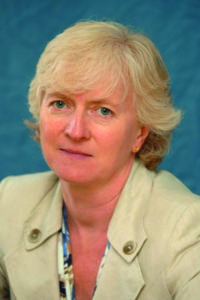
Renton spoke to Vascular News about her experience as a member of the Vascular Surgery Specialty Training Committee in London, UK, noting that there are many challenges facing trainees, which impacts on recruitment. “Attracting new trainees to the speciality is difficult,” Renton says, as “medical students are much less likely to be exposed to vascular surgery during their training than in the past due to changes in the curriculum”. These challenges are multifacetted, with a recent study published in the European Journal of Vascular and Endovascular Surgery finding that 46% of members in a national UK vascular trainee organisation responding to a survey were experiencing or witnessing bullying, undermining or harassment. Authors Robert Fisher and colleagues expand: “Although not previously recognised in UK vascular training, this has been reported in other specialties in Britain and internationally.”
“We have an active programme to recruit in to the speciality,” Renton says. “We hold Introduction to Vascular Surgery sessions twice a year, as a course at the Vascular Society Annual Meeting, as well as at the Charing Cross Symposium. We also have a medical student essay prize and a poster prize.” The Specialty Training Committee is further piloting a programme to recruit to the specialty at an earlier stage, “just two years out of medical school”, Renton explains. “We will be recruiting to this pilot programme in January 2019 with the first of these trainees entering training in August 2019.”
Urbanisation of vascular surgery
The 2017 survey carried out by the SVS found that only 6% of its US vascular surgeons practice in rural settings, with an overwhelming majority 85.4% of respondents practicing in cities with populations over 100,000. As the population ages, demand in the non-urban areas can for some countries increase, as Wareham alluded to in his oral evidence contribution to the Royal College of Surgeon’s Commission on the Future of Surgery: “My understanding is that cities ‘do not age’”, he said, meaning that urban areas like London remain largely inhabited by younger people, who then tend to retire in more rural or remote areas. “I think that has implications for how we plan healthcare services,” Wareham added, “because we might be looking at a greater proportion of elderly people living quite a long way from major cities.”
In his presentation at SVS VAM, Makaroun explained that the concentration of vascular surgeons in certain areas of the USA and shortages in others can to some extent be linked with the location of training centres, suggesting that vascular specialists tend to remain in the area where they trained. “There is a big part of the country that does not even have vascular training programmes”, and by adding such programmes in underserved locations, Makaroun argued they might be able to retain some practicing vascular surgeons in these areas.
Also speaking at the SVS VAM Critical Issues Forum, Anton Sidawy (George Washington University, Washington, DC, USA) presented conclusions from the American College of Surgeon’s 2017 Position Paper on Graduate Medical Education Reform. The paper expands on Makaroun’s argument for a regionalised education structure which places training programmes in underserved areas, further postulating that medical centres could be more successful at retaining trainees if they prioritise recruitment of trainees already local to the area. However, Sidawy warned, “the problem is more immediate”, and long-term strategies to mitigate it “will take a long time to be executed”.
In 2011, Alan J Grant et al argued in the British Medical Journal that although it has long been proposed that optimum care can best be provided by centralising expertise to major care centres, this effort could leave rural areas at a disadvantage. Grant and colleagues write: “Attention must be paid to attracting trainees to a career in rural healthcare, and care must be taken to ensure that this training is adequate to perform the tasks required.”

Denis Harkin and colleagues published a study on the future workforce shortages in Vascular in 2016, observing that “in several UK Regions there are a large number of relatively small teams (three or less) of vascular surgeons working in separate NHS Trusts in close geographical proximity.
“In developed countries, both the number and complexity of vascular surgery procedures (open and endovascular) per capita population is increasing, and concerns have been raised that demand cannot be met without a significant expansion in numbers of vascular surgeons.” Speaking to Vascular News, Harkin adds that in the UK, “the crisis is most acute in Northern Ireland, where we only have three vascular trainee funded posts, instead of the minimum advised six.” Although he has spent several years assessing and projecting future shortages in the UK vascular surgery workforce, Harkin also notes, “predictions regarding growth in demand are complex, and like all predictions, they are uncertain”.
Though the worldwide vascular disease burden is predicted to rise dramatically, the projected recruitment trajectory of vascular specialists is less clear and not as well-studied for many regions outside the UK and USA. Vascular News reached out to the European Society for Vascular Surgery (ESVS), and its president Alison Halliday, who reported that the ESVS do not yet have an estimate of the number of vascular surgeons currently practicing in Europe, nor how that number is expected to change in the future. Vincent Jongkind, secretary general of the ESVS’ subsidiary European Vascular Surgeons in Training, tells Vascular News that although they currently have 463 members, a number which Jongkind says has remained “more or less stable” over recent years, “it is almost impossible to predict the number of future vascular surgeons”.
The Union Européenne des Médecins Spécialistes (UEMS), does not have further information on the future of the vascular workforce number and demand in Europe either, according to its secretary general Armando Mansilha. He tells Vascular News it is a “very interesting” topic, which he is looking to put to the national delegates of the UEMS Council meeting, held at the ESVS annual meeting (25–28 September, Valencia, Spain) to determine whether they are able to provide answers to these questions. The ESVS meeting will also host a session on surgeon burnout, to present a survey of burnout in the USA and discuss the prevalence of this problem in Europe.
Though the USA and SVS are leading the inquiry into—and communication of—future workforce shortages, countries like the UK are similarly being made aware of the extent of this critical issue, and it seems that all affected regions of the world must soon be sure to follow.
